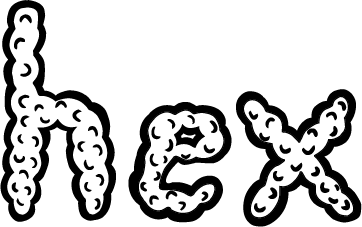A Girl in a Box
How long has she been in there? Even she forgets. One day, it was September 1927—one of those bright fall mornings in Chicago, no longer warm but not quite crisp, a great breath of fog drifting off the lake toward her neighborhood—and the next thing she knew it was autumn, 1954, new buildings on her old block and leaves already falling off the trees, a frisson of static coursing through the air, electric, magnetic, the sharp taste of it mingled with car exhaust and bird shit and the mildewing damp of that box she was trapped in, as if it had been left on a sidewalk overnight, cardboard already puckering where tape had ripped it and dogs peed all over it. She was going to kill that Milo—her brother, that self-important little prick, always going on about how he was the “man of the house” and had to “provide for the family” when all his life he wanted nothing more than to tinker and to experiment, to understand how objects can be made to break apart and come back together again, again and again, like a film strip of a teacup shattering and then kicking into reverse, mending itself before his eyes. He wanted to send images like this into the world, dissect them first into their constituent atoms, and arrange their electrons into a beam he could broadcast anywhere—everywhere—images scattered like bird seed at a pond, and, oh, how the birds would come when they saw a picture of her, the girl with a bob cut, a cloche hat, knee-high socks under patent leather shoes. But: something went wrong—a kink in a wire, an error in his calculations—and she was transported in place of her image, her body broken up into pieces, then reconstituted here. Flesh dimpled. Blood contained. Clothes, it seems, still in place, though scratchier than she remembered and a bit sticky. She was just licking her thumb to rub a dirt blotch when she sensed eyes on her: not just the boy who peered over the crease of the box flap but also his mother in the apartment down the street, their neighbor across the hall, their landlord. All of their eyes fixed on her. This is the part she couldn’t remember before: the wall of eyes, floating, disembodied, in the air around the boy’s head. How each time one blinks a part of her comes unglued—an eyelash, a toenail, that mole in the dip of her lower back (a source of shame, even now, when nothing could be less important). She will forget herself soon. In a moment, she will find herself in 1972, 1999, 2046. Futures her brother never dreamed of. Futures where she will be free.
A Girl with a Hole in Her Head
No one else knows it’s there. Not her parents, not the neighbors, not even the mean boy at recess who will seize on any little defect or misstep as a reason to bully you to tears and claim he was just making a joke. Half the time, she expects him to call her target practice and use a rubber band to launch a pencil clean through the hole; but he never looks at her twice. No one does. Part of her thinks people are just being polite—ignoring the black hole in her forehead under the false assumption that it’s a religious mark or a tattoo designed to act like an optical illusion. That can’t possibly be her brain, can it? All exposed like that, so naked someone could stick a finger right in and poke one of the lobes to test if it’s real. She wouldn’t blame them. She’s done the same thing hundreds of times and never once harmed herself. It’s fun, actually. If she presses one spot on the right curve of her brain, her vision explodes into clouds of psychedelic smoke and blue light, like the dying squiggles of fireworks. When she activates another, she tastes orange, then purple, then aquamarine. New words come to her. Heliognosis, prearboreal, topomycology. In the mirror, she sometimes tricks herself into believing she is a tree or a slug. Or an alien who somehow switched places with the human infant her mother carried to term. Where would that girl be now? Way out on the other side of the galaxy, she imagines. Floating through zero-gravity caves. Splashing in a pollen puddle. If only she could dip a hand into the heart of a star and pour the molten core into a locket. If only her parents would look at her—really look for once—and see how much she needs them.
________
Ruth Joffre is the author of the story collection Night Beast. Her work has been shortlisted for the Creative Capital Awards and been supported by residencies at the Virginia Center for the Creative Arts, Lighthouse Works, The Arctic Circle, and the Whiteley Center. Her writing has appeared or is forthcoming in Lightspeed, Pleiades, Fantasy, khōréō,The Florida Review Online, Kenyon Review, Reckoning, Wigleaf, and the anthologies Best Microfiction 2021 & 2022. A graduate of Cornell University and the Iowa Writers’ Workshop, Ruth served as the 2020-2022 Prose Writer-in-Residence at Hugo House and as a Visiting Writer at University of Washington Bothell in 2023.
